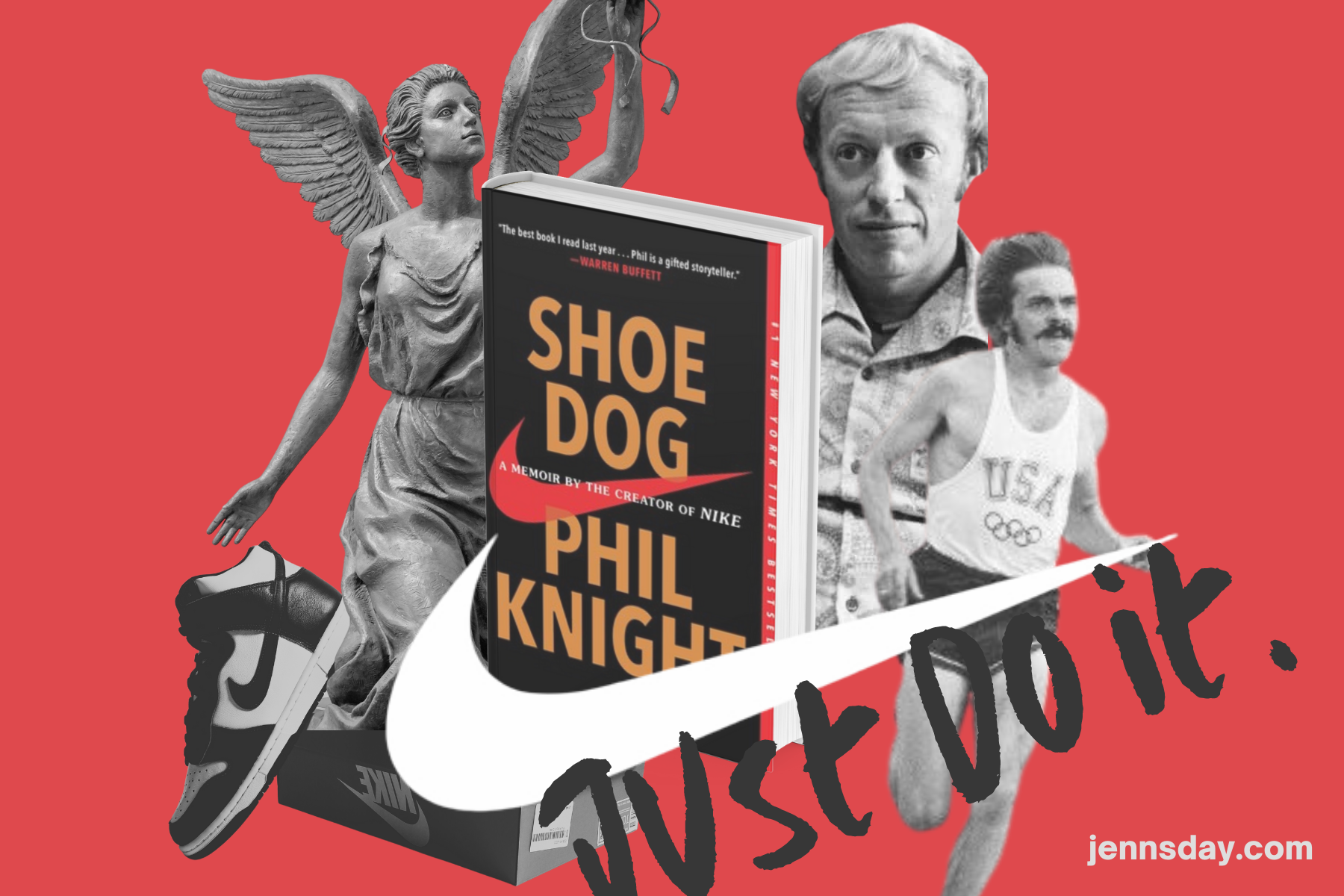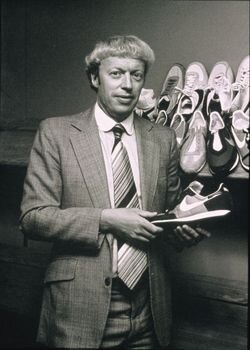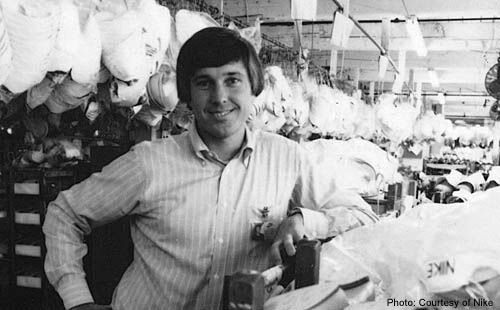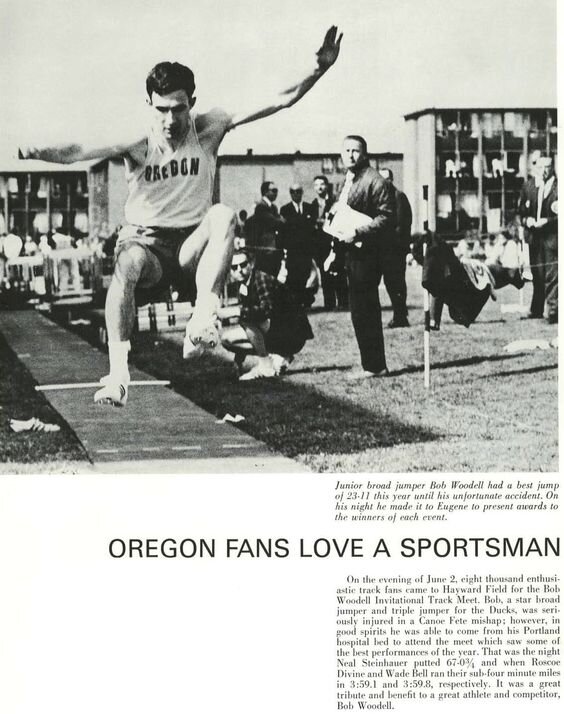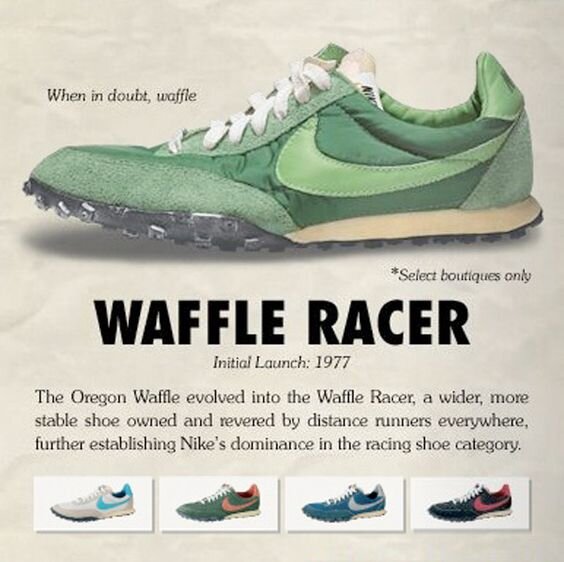Shoe Dog by Phil Knight
Phil Knight reveals what it takes to build the shoe empire Nike. Hint: … Just Do It.
Just do it - Nike. I picked up Shoe Dog after reading Bill Gates' review, calling this book a "refreshingly honest reminder of what the path to business success really looks like". Shoe Dog is a candid memoir written by Nike's co-founder Phil Knight which documents his journey, his triumphs and struggles, in developing Nike. I peered through the pages expecting the usual business narrative: think different, work hard, get a solid team, and rise to fame and fortune. Yet what I received was so much more. How much more? Talk about — starting in Knight's quiet running trail in Portland, Oregon, and then being whisked away halfway around the world to the busy streets of Tokyo fighting a greedy businessman — kind of more.
This detailed book note is an attempt to understand Phil Knight's book, Shoe Dog, from a college student's perspective (... me). Personally, it got me out of my college burnout and I strongly urge every college student to read this book. You will feel like you've lived alongside Knight as he and the "Buttfaces" dedicate their lives to build Nike. Yup, Buttfaces — the name of Nike's core management team consisting of misfits who were misunderstood by society, but share a common quest for validation. A personal validation they felt could be accomplished through their roles in Nike. You will also get a chance to peek through Knight's brain; his leadership philosophy inspired by General Patton, his introverted character, his knowledgeable observations, and most importantly his immense athletic passion and love for sports. Perhaps by the end of the book, you'll be motivated enough to pick your running Nike shoes and start incorporating running into your daily habit. I know, I did.
Click here to purchase Shoe Dog now!
Outline
As a detailed book note, I intend this book note to feel like you're in a rabbit hole. It might be overwhelming to digest all this information. So here's an outline of the themes I'm going to discuss, feel free to click on any you are most curious about and have fun on your deep rabbit hole dive.
Phil Knight photographed next to Nike shoes.
Dealing with Failure
Set the pain aside in defeat, find strength in it, and use the hard-won lessons to build the future.
Leadership and Interactions with People
Taking a chance on people
Don’t tell people what to do, let them surprise you
Passion for Sport
Chase your dreams
Let’s keep going anyway
Challenge yourself
Innovation
Innovation is everywhere. Seek it.
Use failure to innovate
Dealing with Failure
“But business has its warlike parallels. Someone somewhere once said that business is war without bullets, and I tended to agree.”
One of Knight's most interesting observations in the book was the parallels of business to war. Lesson 1: Set the pain aside in defeat, find strength in it, and use the hard-won lessons to reconstruct the future. This was around the year 1962, and America was just at war with Japan. So when Knight first visited Japan to meet Onitsuka executives for the first time, he was very concerned about "how present World War II" was in the room. He wondered about how the American (Knight) and Japanese (Onitsuka) could set aside their painful past of war and move on to work together amicably for Blue Ribbon. Yet several Japanese characters in Knight's book proved Knight's concerns wrong.
The first figure was Mr. Onitsuka himself, the founder of Onitsuka Tigers.
Advertisement of the Onitsuka Tiger Shoe when still distributed by Knight’s company Blue Ribbon.
“Mr. Onitsuka, however, had the particular tenacity of the defeated, which impressed Bowerman. Mr. Onitsuka told Bowerman about founding his shoe company in the ruins of Japan, when all the big cities were still smoldering from American bombs. ”
Knight discovered an appreciation for Japan's "stoic acceptance of defeat". Defeat is never easy and is usually attributed to weakness or even failure. But Knight found it powerful and even heroic that Japanese people could put the war cleanly behind them and reconstruct their nation. So fail fast and look forward to reconstructing. I like to think that this observation influenced Knight's future approach in dealing with problems. In the early days, when Blue Ribbon was at an unstable financial stage, Knight noted that:
"If I failed, I'd fail quickly, so I'd have enough time, enough years, to implement all the hard-won lessons”
I think this really showed how Knight saw wisdom gained from failures as a valuable intangible asset. This lesson comforts me; if one can see failure as an opportunity to gain valuable lessons, it reduces the fear of failure; for even if you fail, you gain valuable lessons anyway. So don't be scared of failure.
The second figure was Fujimoto, an employee in Onitsuka who lost his house in a tragic Japanese Typhoon Billie.
“He’d started over, he said. As the Japanese do. The one thing he hadn’t been able to replace, unfortunately, was his bicycle. ”
Apparently, bicycles were very expensive in the 1960s. Knight was deeply moved by Fujimoto's story and so mailed him 50 dollars for his bike. This cemented Fujimoto's friendship and loyalty with Knight, which proved to be very valuable later when Fujimoto provided early intelligence of Onitsuka's plans to replace Blue Ribbon with other distributors. I think Knight maintained his optimism-despite-failure mentality as he foresaw the decline of his company Blue Ribbon following Onitsuka's decision to seek other US distributors behind Knight's back. Instead of giving up, Knight and his team quickly established new factories, figured out branding and designs, and eventually founded Nike.
The early development of the Nike swoosh logo by Carolyn Davidson (source: TheLogoCreative)
Evolution of the Nike logo over the years (source: TheLogoCreative)
Fun fact: Did you know that Carolyn Davidson, a fresh art student, was paid $35 dollars to design the Nike logo?
Leadership
Every good startup has two things; a good team, and a wise leader. A good team doesn't always mean that every member should have the flashiest resume. In fact, a lot of the members in Nike were misfits who felt that they did not fit in society;
We'd each given ourselves to some quest, some attempt at validation or meaning, and fallen short. Hayes couldn't become a partner because he was too fat. Johnson couldn't cope in the so-called normal world of nine-to-five. Strasser was an insurance lawyer who hated insurance — and lawyers. Woodell lost all his youthful dreams in one fluke accident. I identified with the born loser in each Buttface, and vice versa, and I knew that together we could become winners.
But it takes an exceptional leader, to recognize the unrefined talent, take a chance in them, resonate with what drives them, and build a great team.
Taking a Chance in People
Basketball athlete LeBron James endorsing the Nike shoe. (Source: The Undefeated)
In the middle of some event, I cant recall which, LeBron James asks for a private word. ... "Right. So I went to my jeweler and had them find a Rolex watch from 1972." He hands me the watch. It's engraved: With thanks for taking a chance on me. As usual, I say nothing. I don't know what to say. It wasn't much of a chance. He was pretty close to a sure thing. But taking a chance on people — he's right. You could argue that's what it's all been about.
Jeff Johnson - Employee number one
Jeff Johnson was Nike’s first employee. (source: Runners World)
"Don't tell people how to do things, tell them what to do and let them surprise you with their results" — General Patton
One of Knight's role model in the book was General Patton. I think the above quote accurately represents Knight's leadership style in Nike. Knight was never an autocratic leader, in fact, his leadership style could be more accurately described as laissez-faire. This was clearly seen in Knight's relationship with Nike's employee-number-one; Jeff Johnson. Johnson wrote lots of letters to Knight; to talk about his progress, his new ideas, and sometimes also to complain. But Knight never responded to them, instead, "having told (Johnson) what to do, (Knight) hoped that (Johnson) would surprise him". Knight's leadership style, which puts full trust upon his employees, gave his employees freedom and autonomy to do as they please. This allowed people like Johnson to have enough room to use his creativity and energy.
“ (Johnson) saw that my managerial style gave him freedom. Left to do as he pleased, he responded with boundless creativity and energy. He worked seven days a week, selling and promoting Blue Ribbon, and when he wasn’t selling, he was beaverishly building up his customer data files.”
I admire Jeff Johnson so much in the book; his loyalty to Knight, his genuine care for his customers, his can-do attitude, and his full commitment to Nike. I recommend reading this magazine feature of Johnson to find out more.
https://www.runnersworld.com/advanced/a20792873/employee-number-one/
Woodell
Bob Woodell as an employee in Nike.
Bob Woodell as a track athlete in Oregon.
Bob Woodell was a standout runner in Oregon, but lost his ability to walk due to an accident in his fraternity. For many, it might sound ironic and curious for Knight to hire a man in a wheelchair to sell his shoes. But I think part of Knight's brilliant leadership attributes was knowing each of his employee's best traits and allocating the right jobs for them. Realizing Woodell's ability in focusing in one small task at a time, and solving problems calmly, Knight assigned Woodell as the operations manager for Blue Ribbon.
"What suited Woodell was bringing order to chaos, problem-solving. One small task."
Like Jeff Johnson, Woodell was one of the Nike's most loyal employees. When Nike was facing liquidity issues, Woodell's parents loaned Knight $8,000 (their entire live savings), to keep the business afloat. When asked about why they are willing to do this, Woodell's mother said; "if you can't trust the company your son is working for, then who can you trust?". This was Knight's description of Woodell:
"... though I remember thinking that I wouldn't trade one Woodell for a thousand Kitamis"
In the end, after Woodell retired from Nike, he became the head of Port of Portland. He was in charge of managing the rivers and airports. I think Woodell's story is very inspiring. From his early days in Nike; despite his wheelchair being broken by the airline, Woodell persevered to "tick off every item on his to-do list, and came home with an ear-to-ear mission-accomplished smile on his face." And now, as Knight eloquently phrased.... "A man immobilized, guiding all the motion. Lovely."
Patience is Key
Masaru Hayami as CEO of Nissho Iwai Corporation, the bank that funded Nike (source: Wikipedia)
Nothing is ever instant. A leader must have the patience to nurture the team to reach their full potential. When Knight complained to Mr. Hayami, Nissho's wise CEO, he complained; "we have so much opportunity, but we're having a terrible time getting managers who can seize those opportunities."
Mr Hayami nodded. "See those bamboo trees up there?" he asked. "Yes." "Next year... when you come... they will be one foot higher" I stared. I understood. When I returned to Oregon, I tried hard to cultivate and grow the management team we had, slowly, with more patience, with an eye toward more training and more long term planning. I took the wider, longer view. It worked."
As I was reading this, I envisioned Mr. Hayami as the wise Master Oogwei in the movie Kung Fu Panda.
Running and Passion
What if there were a way, without being an athlete, to feel what athletes feel? To play all the time, instead of working? Or else to enjoy work so much that it becomes essentially the same thing.
Knight was an entrepreneur, a brilliant businessman, a caring guy, but before all that... he was an athlete. His passion for running bleeds through every single page of Shoe Dog. Weaved through the metaphor of running are some of Knight's best life advice. Here are some life lessons from running:
Chase your dreams
In my twenties, my life is full of anxiety about the future, self-doubt, and existential crisis. Most of the time, I don't feel like I belong in this fast-paced world; full of resume-building, experience-seeking, and lots and lots of LinkedIn. It is overwhelming. It is the titular moment of your life, after all. And this can easily cause burnout. But I think the best advice that Knight can offer to all people in their twenties is this:
“It would be nice to help them avoid the typical discouragements. I’d tell them to hit pause, think long and hard about how they want to spend their time, and with whom they want to spend it for the next forty years. I’d tell men and women in their midtwenties not to settle for a job or a profession or even a career. Seek a calling. Even if you don’t know what that means, seek it. If you’re following your calling, the fatigue will be easier to bear, the disappointments will be fuel, the highs will be like nothing you’ve ever felt.”
So chase your dreams, whatever it is. As Knight brilliantly puts it, "chase it with an athlete's single-minded dedication and purpose". Like people in their twenties, runners who run a circular track often have no real destination, no clear path ahead, but Phil reminds us that; "the act itself becomes the destination. It's not just that there's no finish line; it's that you define the finish line." Spoken like a true athlete.
Let's keep going, anyway
In every single journey, there will always be challenges. Bumps around the road. Knight suggests that we approach these challenges by forgetting our limitations, all self-doubts, pain.. and keep going anyway.
"The art of competing, I’d learned from track, was the art of forgetting, and I now reminded myself of that fact. You must forget your limits. You must forget your doubts, your pain, your past. You must forget that internal voice screaming, begging, “Not one more step!” And when it’s not possible to forget it, you must negotiate with it. I thought over all the races in which my mind wanted one thing, and my body wanted another, those laps in which I’d had to tell my body, “Yes, you raise some excellent points, but let’s keep going anyway . . ”
Steve Prefontaine: Push yourself to the edge
Young Steve Prefontaine in 1969 (Source: Wikipedia)
Steve Prefontaine was Oregon's star runner who competed in the Olympics and was Nike's first track endorser. Prefontaine trained under Bill Bowerman, who was also Knight's running trainer, and Nike's co-founder. Knight and his wife, Penny, were huge fans of Prefontaine's charisma and display of passion on the track. This was how Knight described Prefontaine's magical race:
When sports are at their best, the spirit of the fan merges with the spirit of the athlete, and in that convergence, in that transference, is the oneness that the mystics talk about.
Steve Prefontaine at one of his running track matches (source: Athletics).
One of Prefontain's biggest appeals is his willingness to push himself to the edge. For instance, typically in running, out of 4 races, athletes conserve some of their energy for the final lap. Yet, Prefontaine refused to slow down and ease off. Instead, he "pushed himself to the bring and beyond." And the crowd loved him so much. Knight noted this observation, repeating to himself to never forget this moment, because "no matter the sport — no matter the human endeavor, really — total effort will win people's hearts." Unfortunately, Prefontaine died at age 24 due to an automobile accident. Yet his legacy lives with Nike, as Phil vows to keep Prefontaine's intense display of passion.
"Do not forget. I told myself there was much to be learned from such a display of passion, whether you were running a mile or a company."
Innovation
The original Waffle shoe that was invented by Bowerman. It was inspired by his wife’s waffle maker. (source: pinterest)
Innovation is everywhere. Seek it. Mr. Onitsuka found the inspiration of Tiger's soles, now seen in Asics shoes, from an Octopus's leg in his sushi. Bill Bowerman used the waffle-maker to create Nike's famous flexible sole. It takes a great deal of dedication to make the idea a reality.
“Mr. Onitsuka also told Bowerman that the inspiration for the unique soles on Tigers had come to him while eating sushi. Looking down at his wooden platter, at the underside of an octopus’s leg, he thought a similar suction cup might work on the sole of a runner’s flat. Bowerman filed that away. Inspiration, he learned, can come from quotidian things. Things you might eat. Or find lying around the house.”
“The following Sunday, sitting over breakfast with his wife, Bowerman’s gaze drifted to her waffle iron. He noted the waffle iron’s gridded pattern. It conformed with a certain pattern in his mind’s eye, a pattern he’d been seeing, or seeking, for months, if not years. He asked Mrs. Bowerman if he could borrow it.
A great deal of Nike's commitment to their customer is to learn from customer feedback to improve. Use feedback as a drive for innovation.
“Some customers freely volunteered their opinion about Tigers, so Johnson began aggregating this customer feedback, using it to create new design sketches. One man, for instance, complained that Tiger flats didn’t have enough cushion. He wanted to run the Boston Marathon but didn’t think Tigers would last the twenty-six miles. So Johnson hired a local cobbler to graft rubber soles from a pair of shower shoes into a pair of Tiger flats. Voilà. Johnson’s Frankenstein flat had space-age, full-length, midsole cushioning. (Today it’s standard in all training shoes for runners).”
Conclusion
So there you go. My first ever book notes on Shoe Dog. I hope you enjoy reading them. As my commitment to provide better book notes, I am always open to feedback, so please feel free to comment down below. Also, feel free to comment to discuss the book with me, I'd be happy to know what you guys think!
Hey, I’m Jenn —
Let’s discover life-changing books together! 📚💡
I love to read nonfiction books and summarize important lessons. My goal is to help you get SMARTER and be more PRODUCTIVE in less time. 🚀
To maintain full transparency, please note that some of the links posted are affiliate links which helps me provide more great content for free.
